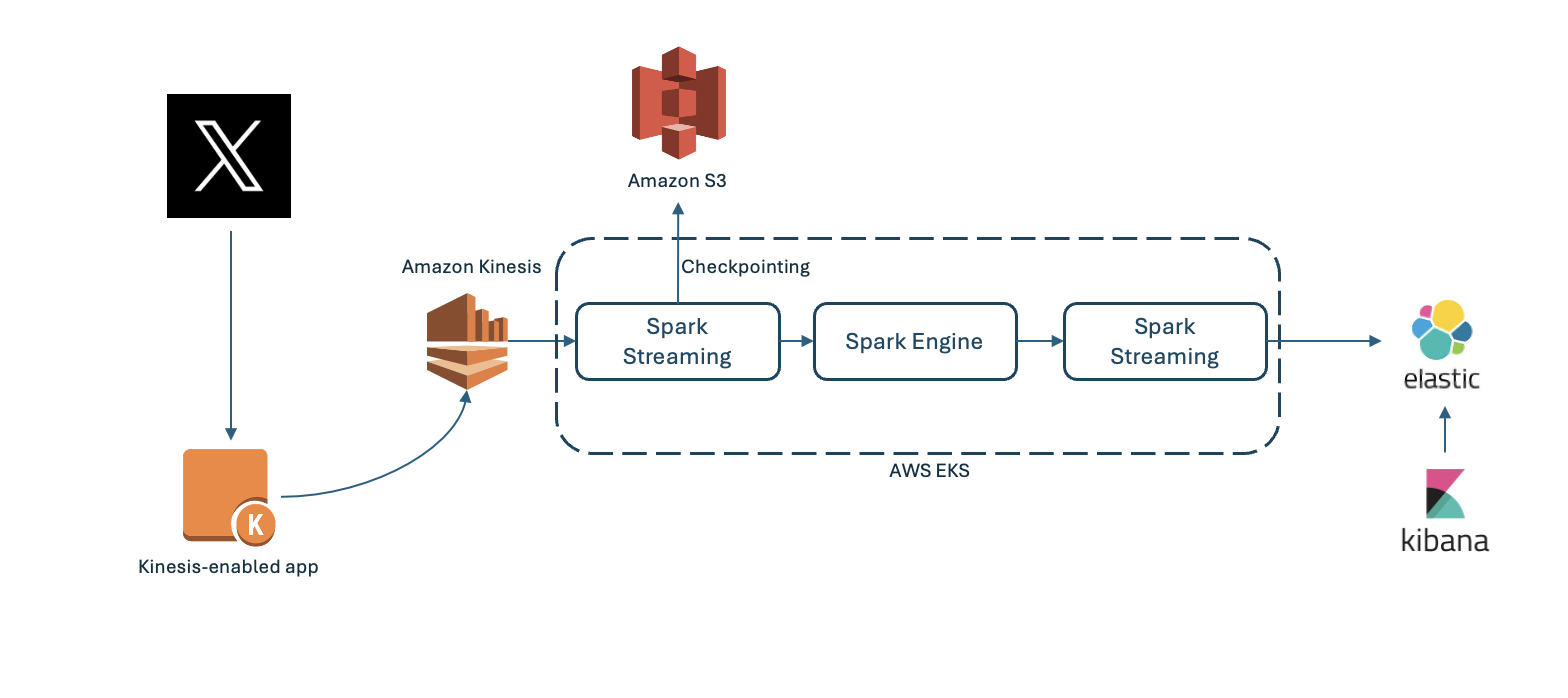Perform Sentiment Analysis on X on Arm-based EKS clusters
Introduction
Overview
Monitoring sentiment with Elasticsearch and Kibana
Set up Sentiment Analysis with Amazon EKS
Monitor the cluster with Prometheus and Grafana
Next Steps
Perform Sentiment Analysis on X on Arm-based EKS clusters
What is Sentiment Analysis?
Sentiment analysis, sometimes called opinion mining, is a natural language processing (NLP) technique used to identify and categorize sentiment expressed in digital text.
Sentiment analysis uses tools to scan text and decipher the emotion behind the message, which might broadly be interpreted as positive, negative, or neutral.
What can Sentiment Analysis achieve, and why analyze posts on X?
Sentiment analysis can help identify trends and patterns, and inform predictions.
Sentiment analysis provides insights into how people feel about a particular topic or issue, and can help to identify emerging viewpoints.
It is a scalable way of providing organizations and businesses with valuable data such as insights into user feedback, which can then be used in reputation management.
Tracking real-time changes enables you to recognize sentiment patterns and make informed decisions promptly, allowing for timely and appropriate actions.
X is one of the most popular social media platforms, and provides a wealth of rapidly-changing information about public opinion, trends, and events.
Before 2023, X was formerly known as Twitter. Although often still referred to by many as Twitter, this Learning Path uses the official name, X. “Tweets” are also now known as “posts”.
Solution Architecture: Using an Arm-based Amazon EKS Cluster
Real-time sentiment analysis is a compute-intense task and can rapidly consume resources and increase costs if not managed effectively.
Using an Arm-based Amazon EKS cluster can address these issues by offering flexibility, strong performance and cost efficiencies.
Figure 1 shows the solution architecture that this Learning Path uses for sentiment analysis:
 Figure 1: Sentiment Analysis Architecture.
Figure 1: Sentiment Analysis Architecture.
The technology stack for this solution includes the following steps:
Use the X developer API to fetch posts based on certain keywords.
Process the captured data using Amazon Kinesis.
Run a sentiment analysis model to categorize the text and classify the tone.
Process the sentiment of the posts using Apache Spark streaming API.
Use Elasticsearch and Kibana to store the processed Tweets and showcase the activity on a dashboard.
Monitor the CPU and RAM resources of the Amazon EKS cluster with Prometheus and Grafana.